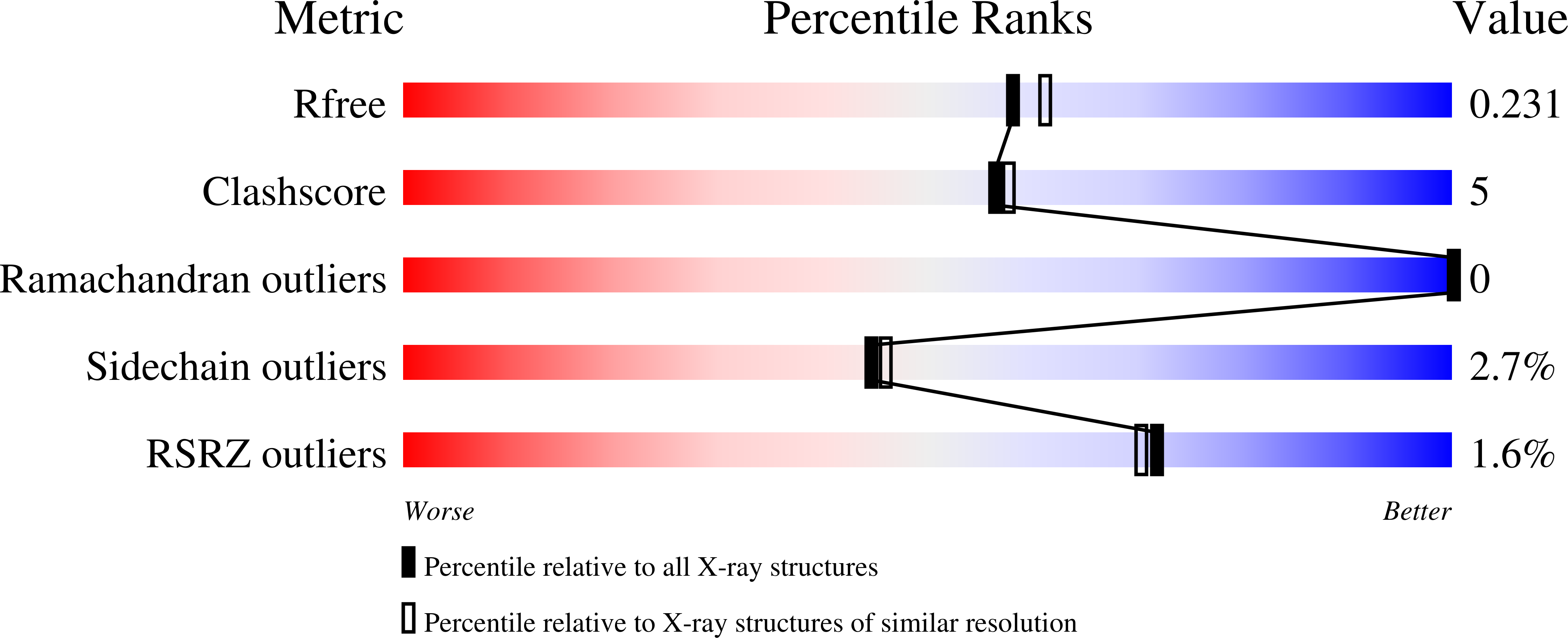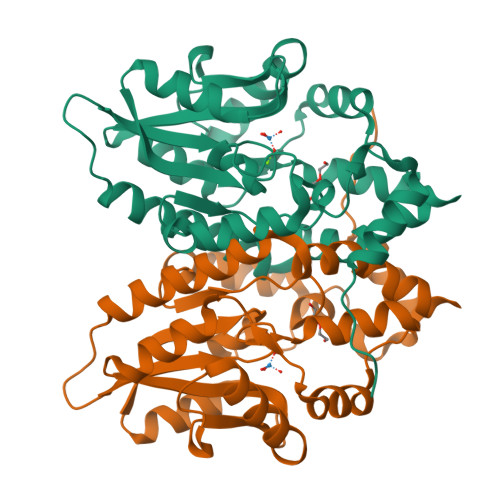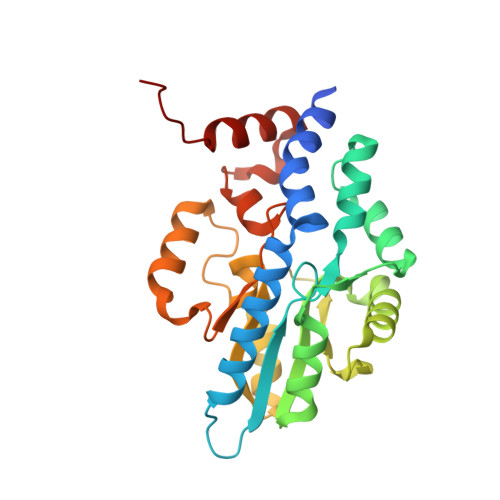Structure of Recombinant Haemophilus Influenzae E (P4) Acid Phosphatase Reveals a New Member of the Haloacid Dehalogenase Superfamily.
Felts, R.L., Ou, Z., Reilly, T.J., Tanner, J.J.(2007) Biochemistry 46: 11110
- PubMed: 17824671
- DOI: https://doi.org/10.1021/bi701016m
- Primary Citation of Related Structures:
3ET4, 3ET5 - PubMed Abstract:
Lipoprotein e (P4) from Haemophilus influenzae belongs to the "DDDD" superfamily of phosphohydrolases and is the prototype of class C nonspecific acid phosphatases. P4 is also a component of a H. influenzae vaccine. We report the crystal structures of recombinant P4 in the ligand-free and tungstate-inhibited forms, which are the first structures of a class C phosphatase. P4 has a two-domain architecture consisting of a core alpha/beta domain and a smaller alpha domain. The core domain features a five-stranded beta-sheet flanked by helices on both sides that is reminiscent of the haloacid dehalogenase superfamily. The alpha domain appears to be unique and plays roles in substrate binding and dimerization. The active site is solvent accessible and located in a cleft between the two domains. The structure shows that P4 is a metalloenzyme and that magnesium is the most likely metal ion in the crystalline recombinant enzyme. The ligands of the metal ion are the carboxyl groups of the first and third Asp residues of the DDDD motif, the backbone carbonyl of the second Asp of the DDDD motif, and two water molecules. The structure of the tungstate-bound enzyme suggests that Asp64 is the nucleophile that attacks the substrate P atom. Dimerization appears to be important for catalysis because intersubunit contacts stabilize the active site. Analysis of the structural context of mutations engineered for vaccine studies shows that the most promising mutations are located in the dimer interface. This observation suggests a structure-based vaccine design strategy in which the dimer interface is disrupted in order to expose epitopes that are buried in dimeric P4.
Organizational Affiliation:
Department of Chemistry, University of Missouri-Columbia, Columbia, Missouri 65211, USA.





















